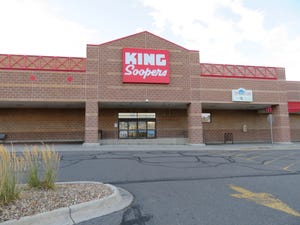WAL-MART CPFR PILOT CHARTS COURSE FOR IN-STOCK GROWTHWAL-MART CPFR PILOT CHARTS COURSE FOR IN-STOCK GROWTH
BENTONVILLE, Ark. -- In a pilot of collaborative planning, forecasting and replenishment, Wal-Mart Stores here increased its in-stock position of Warner-Lambert's Listerine line from 87% to 98%.CPFR involves joint evaluation of a number of aspects of the supply chain by both retailers and vendors. In this pilot, Wal-Mart and Warner-Lambert, Morris Plains, N.J., examined in-stock issues at the retailer's
June 16, 1997
LINDA PURPURA
BENTONVILLE, Ark. -- In a pilot of collaborative planning, forecasting and replenishment, Wal-Mart Stores here increased its in-stock position of Warner-Lambert's Listerine line from 87% to 98%.
CPFR involves joint evaluation of a number of aspects of the supply chain by both retailers and vendors. In this pilot, Wal-Mart and Warner-Lambert, Morris Plains, N.J., examined in-stock issues at the retailer's distribution center, promotional events and product profiles in the retailer's buying systems.
The increased in-stock position drove sales increases representing millions of dollars for both the manufacturer and the retailer, according to the supplier.
The supplier also noted that during the test period, inventory of its 12 Listerine products of different flavors and sizes decreased by about 20%. Better forecasting, the supplier said, optimized both service and inventory levels.
The CPFR pilot between Wal-Mart and Warner-Lambert, which was handled on paper rather than through the Internet as was originally planned, yielded these results over a five-month period beginning in April 1996.
A source at Wal-Mart said it would not be a surprise to see a CPFR test with the supplier in the future, adding that it would likely be conducted using the Internet.
Support for CPFR as an Internet application is gaining ground in the industry. The Voluntary Interindustry Commerce Standards Board, Washington, is working to develop standards for the Internet technology.
Sources familiar with the situation said that CPFR can be applied to the grocery industry. Up to now, most of the efficient replenishment efforts in the grocery business have been centered around continuous replenishment programs. CPFR includes CRP but also offers additional collaboration options.
For example, while vendors create the forecast and replenishment plans under CRP, using CPFR a retailer can provide selling rates and a product's inventory status. The manufacturer can then figure out when to supply the product and in what quantity.
About the Author
You May Also Like




